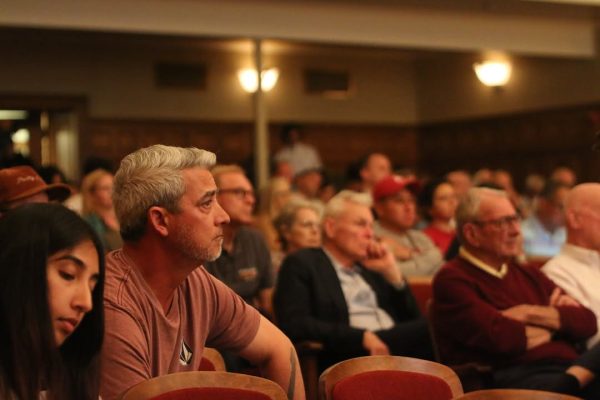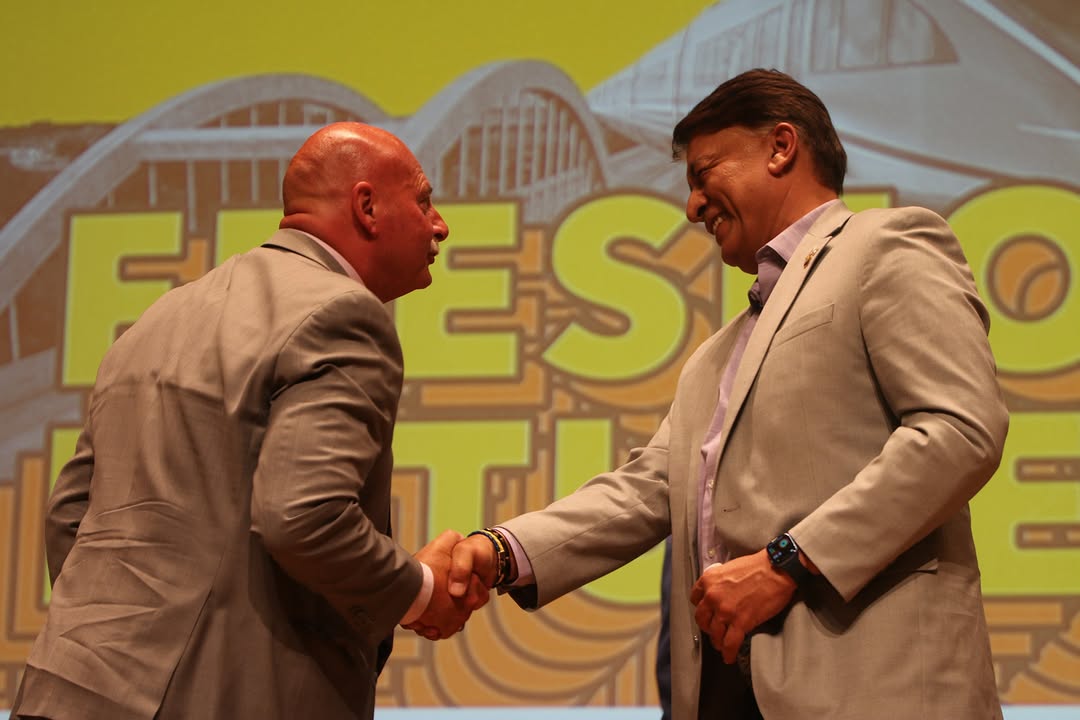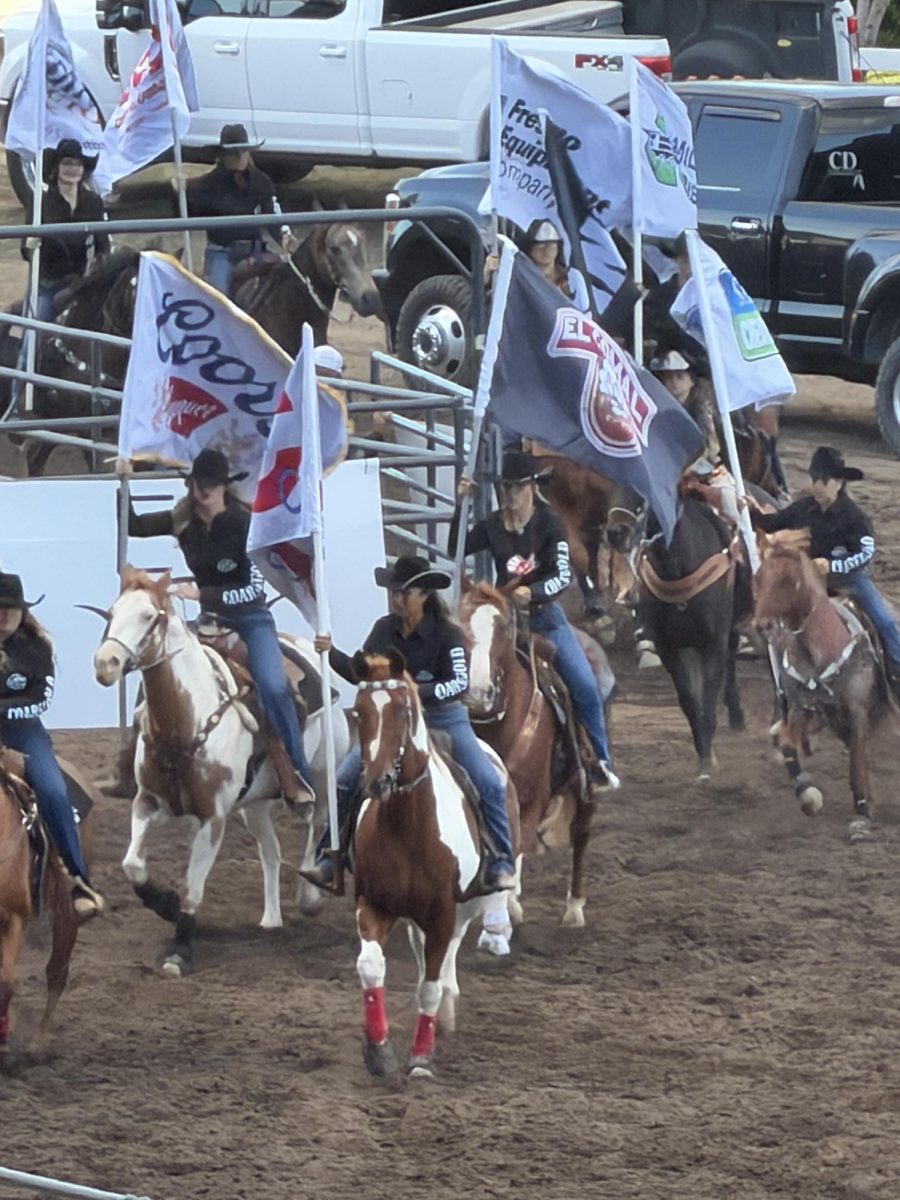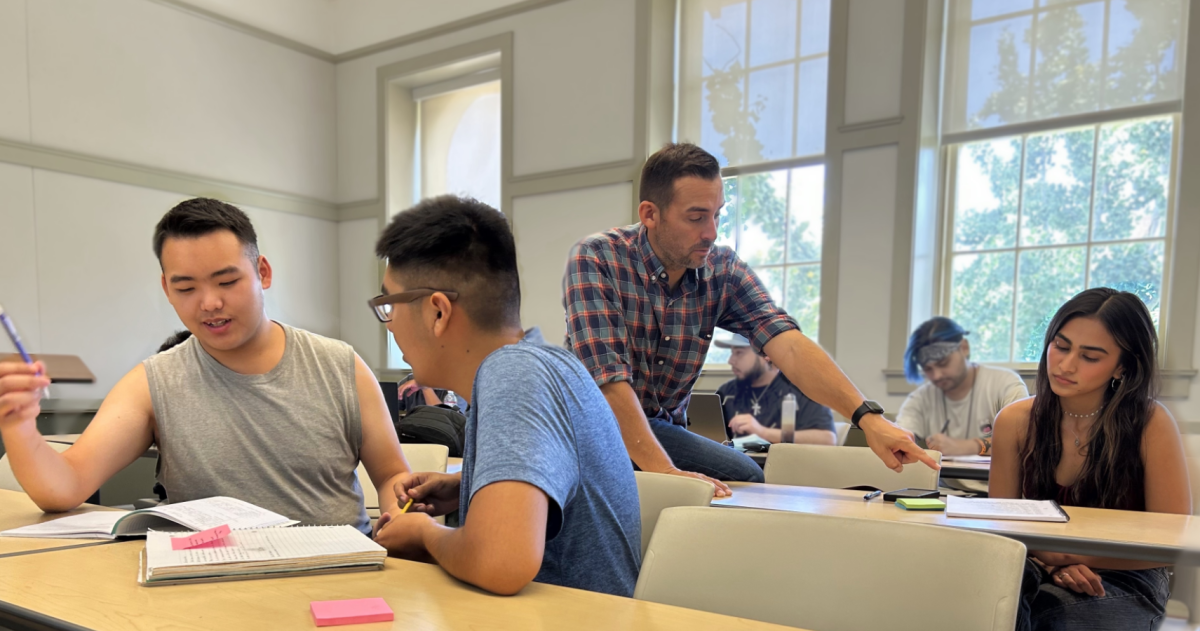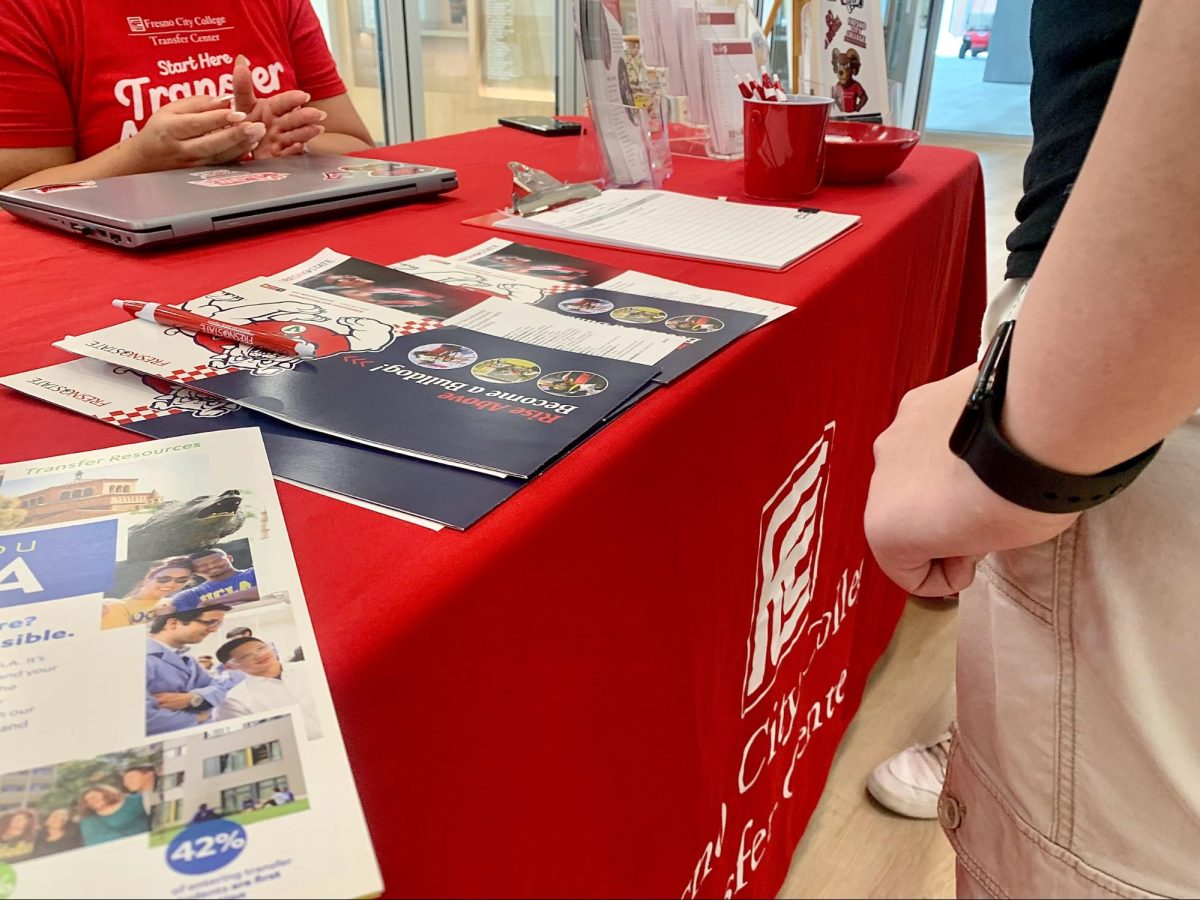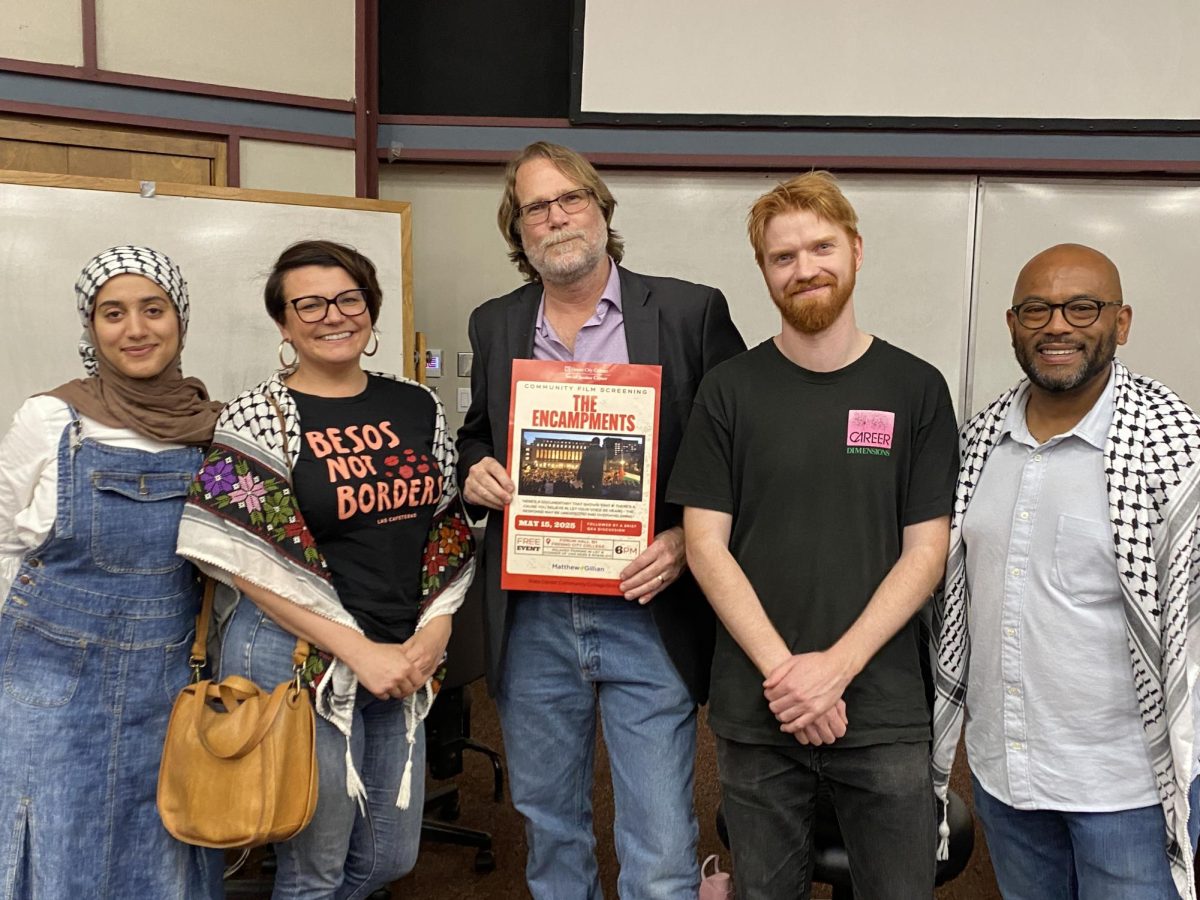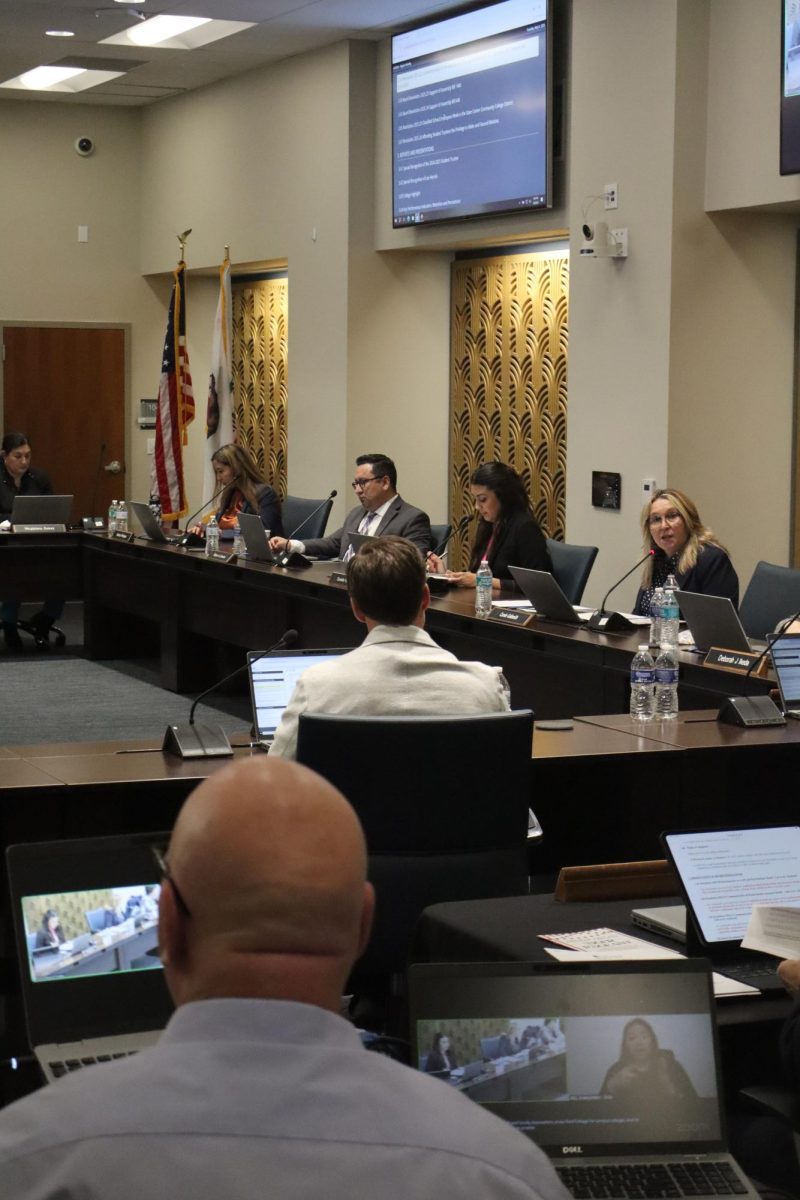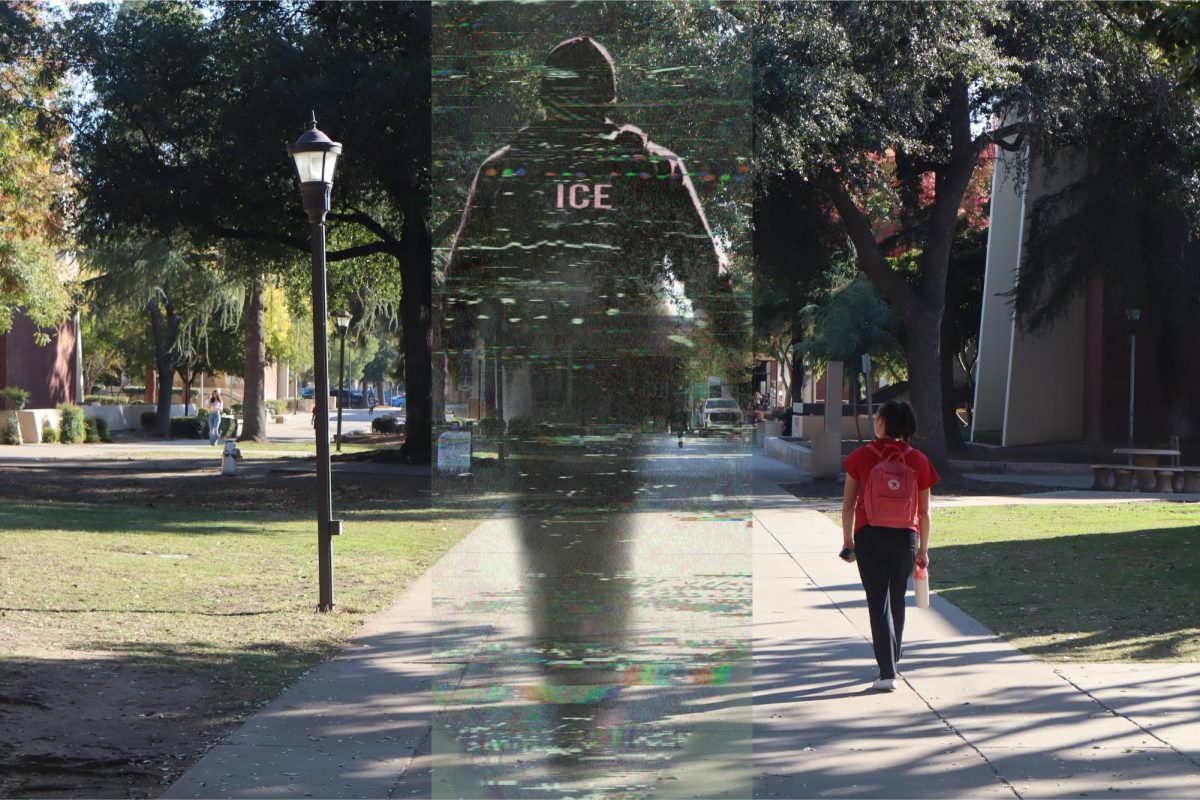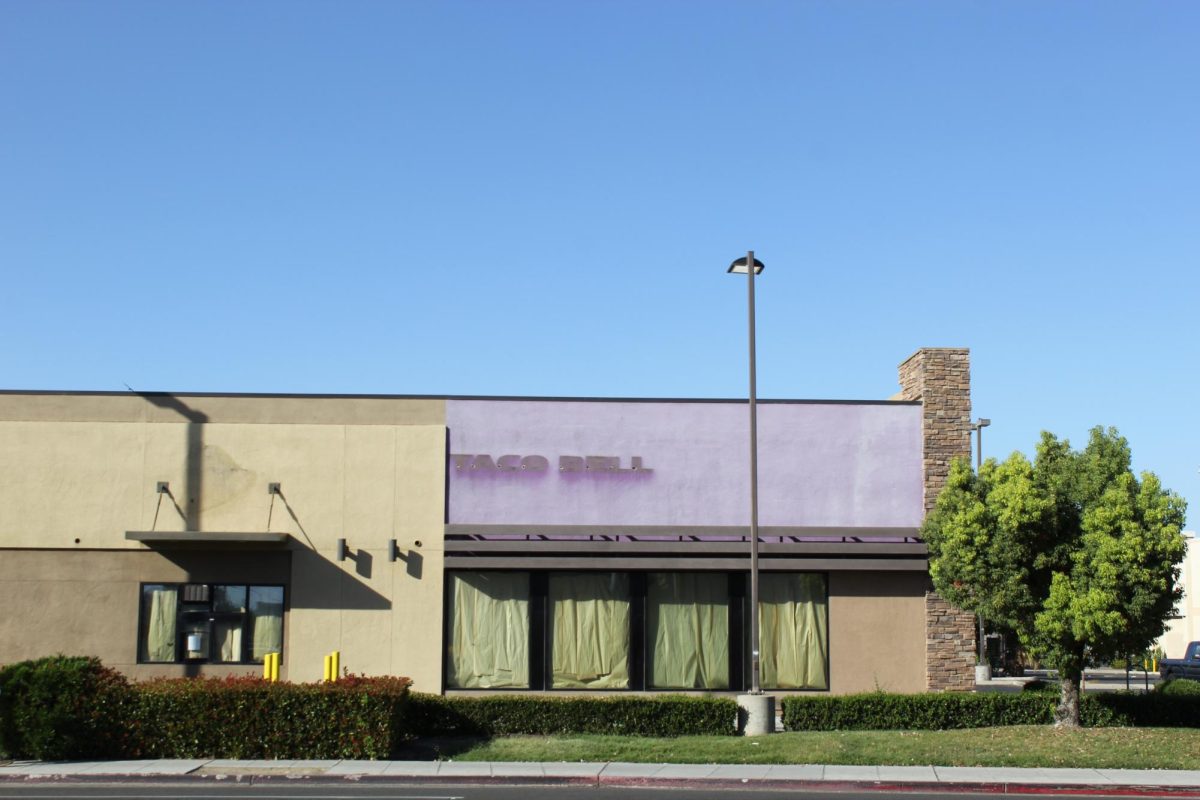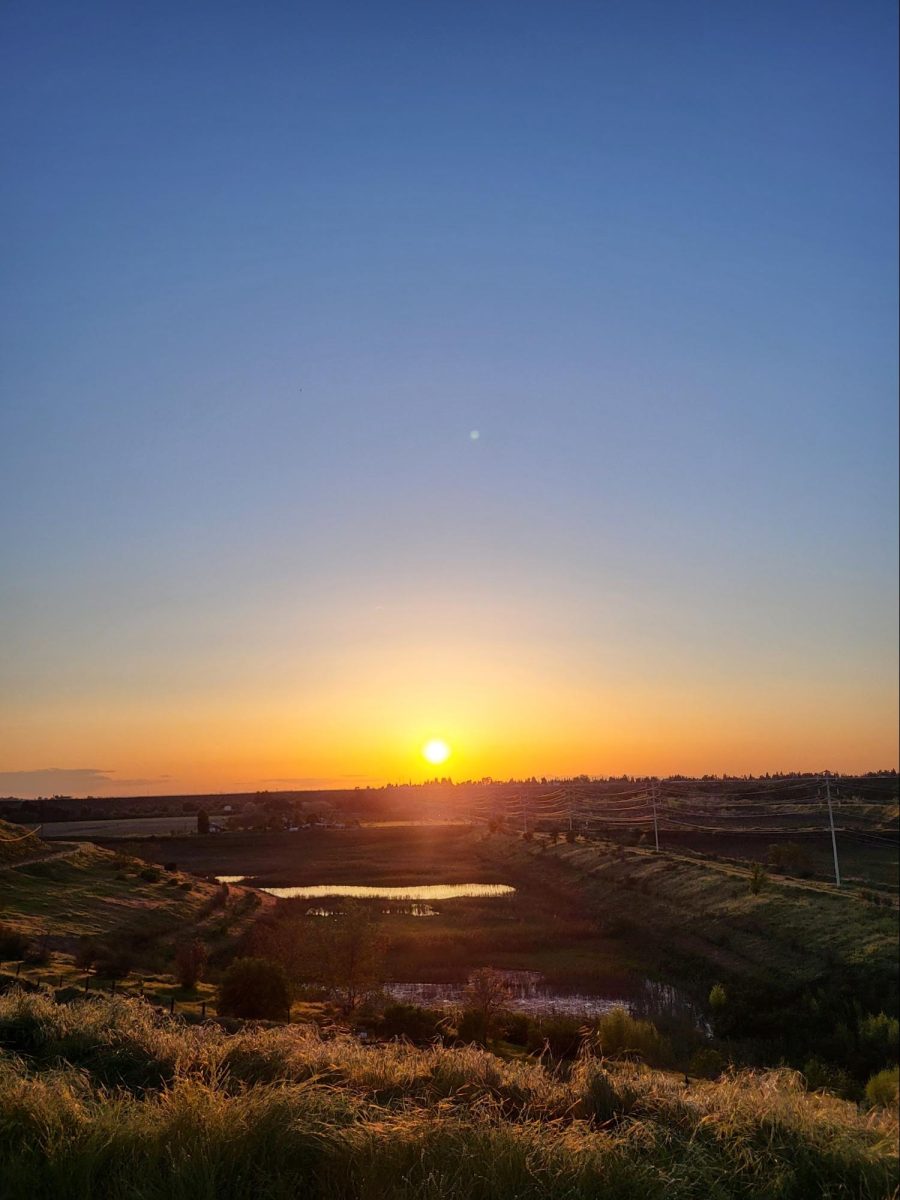A discussion on California’s high-speed rail project, with topics ranging from the railway’s long construction phase to the potential economic boons for the Central Valley, was hosted by Fresnoland and CalMatters at Fresno City College in the Old Administration Building auditorium on April 22.
The forum featured California High-Speed Rail Authority CEO Ian Choudri, Fresno Mayor Jerry Dyer, California State Assemblymember Dr. Joaquin Arambula and the California Voices Editor at CalMatters Yousef Baig.

By 2033, Choudri stated that passenger rail service would be ready for a line from Merced to Bakersfield, the initial phase of the high-speed rail project.
There remains no timetable of rail construction to the Bay Area and LA, according to Choudri.
The opening is set between 2030-2033 according to a February report by the Inspector General of the California High-Speed Rail Authority. The report warned that the Merced to Bakersfield line was likely to be delayed from its target opening in 2030 by one year, further stating it is unlikely to complete by 2033.
The leaders at the panel agreed that construction would not stop until completion of the rail.
“I do not see any point where we have to say ‘Oh, we cannot do it,” Choudri said. “I mean, that would be a disaster for the U.S. and the entire northern hemisphere.”
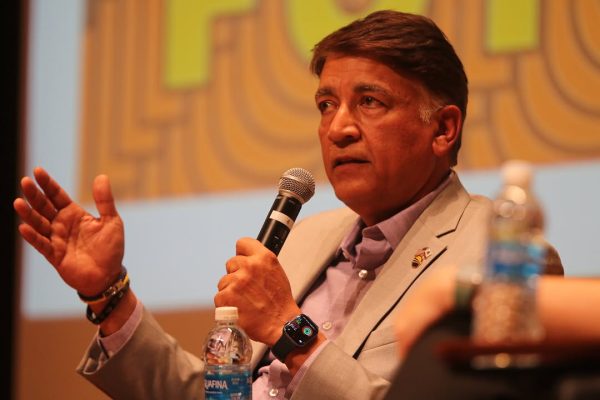
The Future of Funding the Rail
Choudri stated that federal funding and support was important for the completion of one of the first U.S. high-speed rail projects. He pointed to government support for similar infrastructure in Japan and Europe as integral to the success of quickly built high-speed rail.
However, with President Donald Trump’s vocal opposition to the continued construction of California’s high-speed rail, forum moderator and Fresnoland’s Executive Director, Danielle Bergstrom, questioned what would be the railway’s fate without federal grants.
Choudri still hoped to continue partnering with the Trump administration on the rail project. He also believed it was possible to move forward in the event of federal dollars drying up.
He stated budgets could be adjusted to take the lost funds into account and continue construction.
According to Arambula, 77% of the $9.95 billion from Proposition 1A have been spent; the initial California bond measure passed in 2008 funded the high-speed rail.
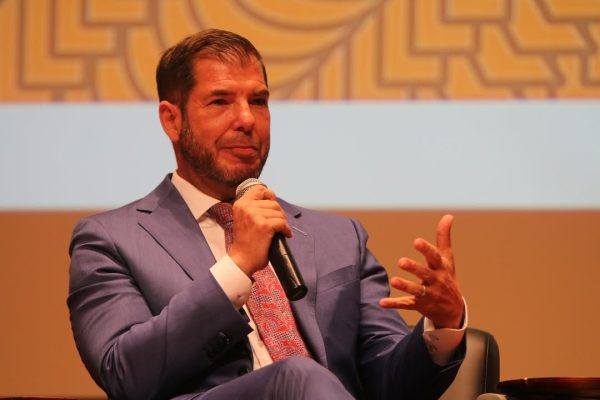
He said the high-speed rail receives 25% of revenue from the state’s cap-and-trade program. The government plan sets limits on emissions before issuing limited allowances for companies to purchase in order to emit more.
“It’s [cap-and-trade] the only steady funding stream,” Baig said.
The funds gained from allowances are directed towards green initiatives including high-speed rail, but only runs to 2030, according to Arambula.
Bergstrom mentioned a $7 billion shortfall in the costs needed to complete the Merced to Bakersfield segment of the rail. Choudri believes the figure to be inaccurate, stating that reassessments later in the year would clarify the amount and was certain of a smaller cost.
Choudri added that he met with 400 industry leaders in January to discuss the high-speed rail project, a group he believed were interested in making investments. However, he said it was necessary for the state to make tax law changes and create an environment that would support private investments into the rail project.
Private funding would be an alternative source to address shortfalls and bring more capital to the rails.
Baig said the shortfall signals a critical point in the project. Depending on whether the Central Valley segment can be completed, a failure to do so reflects an image of a California that is unable to meet its goals.
“As long as the state is allocating money, this project is going to continue. It’s just a matter of will it be done in 2033 or will it be done when I’m in my 50s,” Baig said.
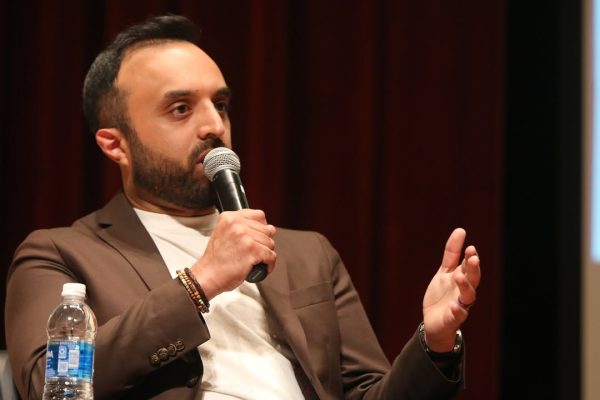
The Plans for Downtown Fresno
Dyer maintains support for the high-speed rail project and is one of the few Republicans in leadership positions to do so.
“Oftentimes I hear about Fresno being first in pollution, first in poverty,” Dyer said. “We’re going to have the first high speed rail station in the nation, developed right here in downtown Fresno.”
He pointed to the expensive living costs in Silicon Valley compared to Fresno. Dyer said the eventual high-speed rail connection between the two areas would bring movers to the city, due to lower costs of living and shorter commute times thanks to the rail.
“I think it would be significant for Fresno and it would change, diversify our economy in a good way,” Dyer said.
He mentioned various development plans including a student housing project for the State Center Community College District, as ways to support downtown activity.
Zoning work has accounted for 75,000 people to live in Chinatown and according to Dyer, the work and progress had led to investments by the state.
The state budget allocated $250 million to revitalize the downtown Fresno area, aligning with goals to prepare for the high-speed rail station which would run through both Chinatown and downtown. Dyer further added that $43.7 million was received to build housing.
He felt the city had used the state’s award quickly in accordance with the guidelines of the stipend, but felt there were delays for the $200 million yet to be sent by the state.
Old infrastructure has acted as a barrier and required the demolition of century-old buildings to make way for development, according to Dyer.
He mentioned troubles with property owners who had purchased vacancies in the downtown area without developing projects.
Dyer stated it was not possible to build only affordable housing in the downtown area, stating that it doesn’t bring the “vibrance” of market-rate houses. He said it wouldn’t bring 24/7 activity to downtown.
An audience response questioned the commute time from the station, with a rail trip from Bakersfield requiring a further 45 minute FAX bus ride to get to Fresno State.
Dyer said part of the $250 million would be used to build “multimodal transportation locations” in downtown and Chinatown. Rideshares, the FAX bus and bikes would “feed into” populated areas including Fresno State or Tower District.
“The last thing we want to do is create a delay in getting people to the high-speed rail station,” he said.

Costs and Framing of High-Speed Rail
Arambula stated right-of-way projects in the Central Valley were 99% acquired. Right-of-way acquisitions refer to securing property rights used in the case of building infrastructure including roads and railways.
An audience comment to Fresnoland that was posed to the speakers stated the cost per mile for California’s rail exceeded other train lines such as France’s TGV, questioning the need for additional funding and what steps by the Authority were being taken to assure the project’s financial stability.
Choudri pointed to the lack of authority to be able to clear paths for railways and not being in possession of land prior to construction. The right-of-way acquisitions, dealing with private landowners and regulations have played a role in driving costs up.
He states various factors may affect cost per mile and changes depending on the country, finding it to be not the sole formula of measuring a project’s value.
Baig felt there was a developed bias against the high-speed rail in its coverage by journalists. This has often been associated with publications not in the Central Valley. President Barack Obama’s administration supported the rail’s construction to nurture the region’s economic empowerment rather than along the California coastline.
He said the framing of stories about the high-speed rail have made it difficult for the average person to be informed on the topic.
“I think it makes it hard to recognize that things can get better. Things can improve. And when you combine improvement with some accountability, that’s how you start to have a healthier conversation about a public infrastructure project,” Baig said.
